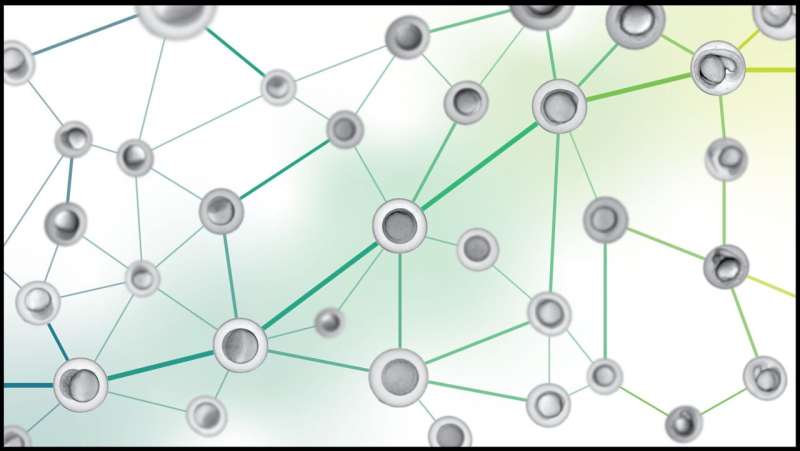This article has been reviewed according to Science X's editorial process and policies. Editors have highlighted the following attributes while ensuring the content's credibility:
fact-checked
peer-reviewed publication
trusted source
proofread
AI recognizes the tempo and stages of embryonic development

Animal embryos go through a series of characteristic developmental stages on their journey from a fertilized egg cell to a functional organism. This biological process is largely genetically controlled and follows a similar pattern across different animal species.
Yet, there are differences in the details—between individual species and even among embryos of the same species. For example, the tempo at which individual embryonic stages are passed through can vary. Such variations in embryonic development are considered an important driver of evolution, as they can lead to new characteristics, thus promoting evolutionary adaptations and biodiversity.
Studying the embryonic development of animals is therefore of great importance to better understand evolutionary mechanisms. But how can differences in embryonic development, such as the timing of developmental stages, be recorded objectively and efficiently? Researchers at the University of Konstanz led by systems biologist Patrick Müller are developing and using methods based on artificial intelligence (AI).
In their current article in Nature Methods, they describe a novel approach that automatically captures the tempo of development processes and recognizes characteristic stages without human input—standardized and across species boundaries.
Every embryo is a little different
Our current knowledge of animal embryogenesis and individual developmental stages is based on studies in which embryos of different ages were observed under the microscope and described in detail. Thanks to this painstaking manual work, reference books with idealized depictions of individual embryonic stages are available for many animal species today.
"However, embryos often do not look exactly the same under the microscope as they do in the schematic drawings. And the transitions between individual stages are not abrupt, but more gradual," explains Müller. Manually assigning an embryo to the various stages of development is therefore not trivial even for experts and a bit subjective.
What makes it even more difficult is that embryonic development does not always follow the expected timetable. "Various factors can influence the timing of embryonic development, such as temperature," explains Müller. The AI-supported method he and his colleagues developed is a substantial step forward.
For a first application example, the researchers trained their Twin Network with more than 3 million images of zebrafish embryos that were developing healthily. They then used the resulting AI model to automatically determine the developmental age of other zebrafish embryos.
Objective, accurate and generalizable
The researchers were able to demonstrate that the AI is capable of identifying key steps in zebrafish embryogenesis and detecting individual stages of development fully automatically and without human input. In their study, the researchers used the AI system to compare the developmental stage of embryos and describe the temperature dependence of embryonic development in zebrafish.
Although the AI was trained with images of normally developing embryos, it was also able to identify malformations that can occur spontaneously in a certain percentage of embryos or that may be triggered by environmental toxins.
In a final step, the researchers transferred the method to other animal species, such as sticklebacks or the worm Caenorhabditis elegans, which is evolutionarily quite distant from zebrafish. "Once the necessary image material is available, our Twin Network-based method can be used to analyze the embryonic development of various animal species in terms of time and stages. Even if no comparative data for the animal species exists, our system works in an objective, standardized way," Müller explains. The method therefore holds great potential for studying the development and evolution of previously uncharacterized animal species.
More information: Uncovering developmental time and tempo using deep learning, Nature Methods (2023). DOI: 10.1038/s41592-023-02083-8. www.nature.com/articles/s41592-023-02083-8
Journal information: Nature Methods
Provided by University of Konstanz





















